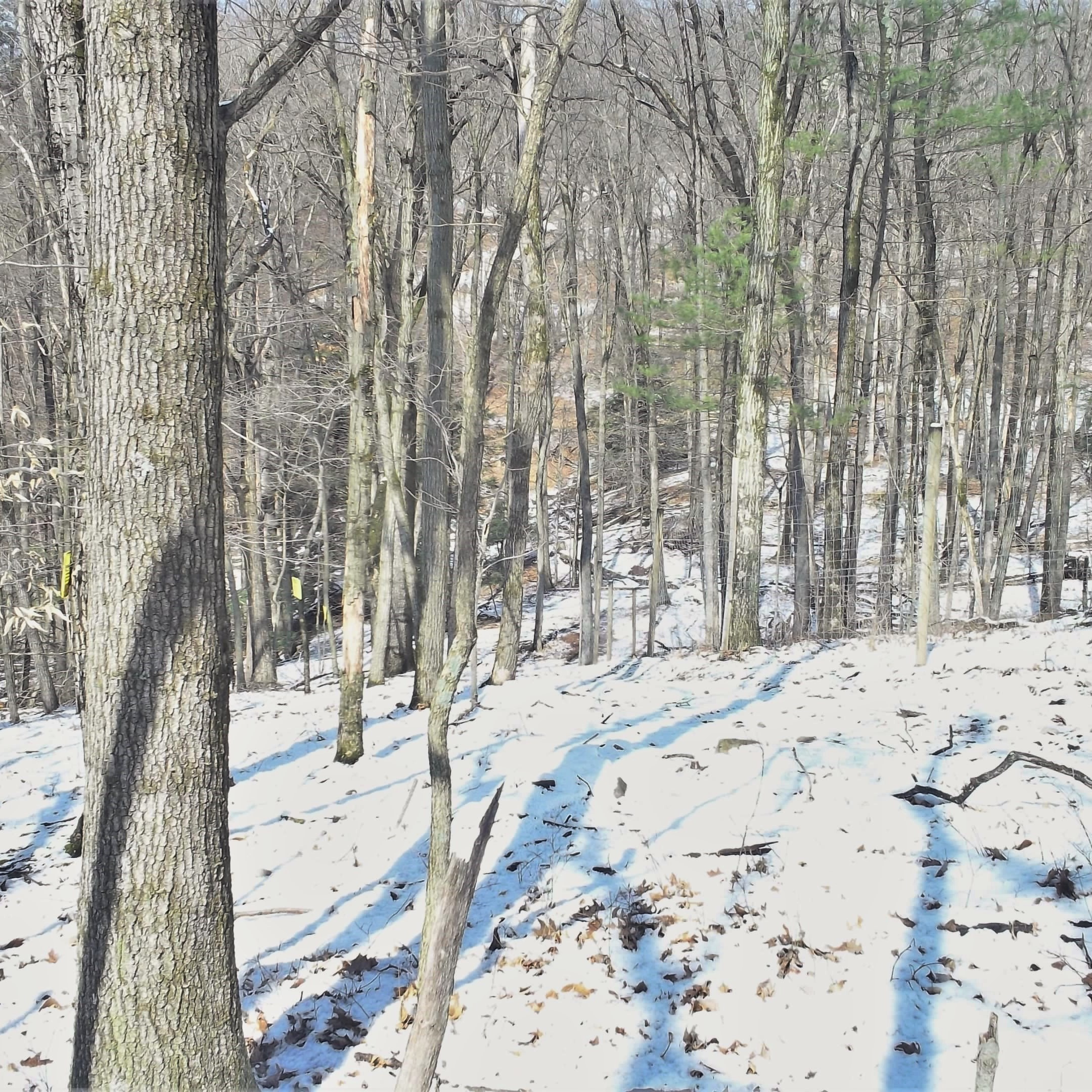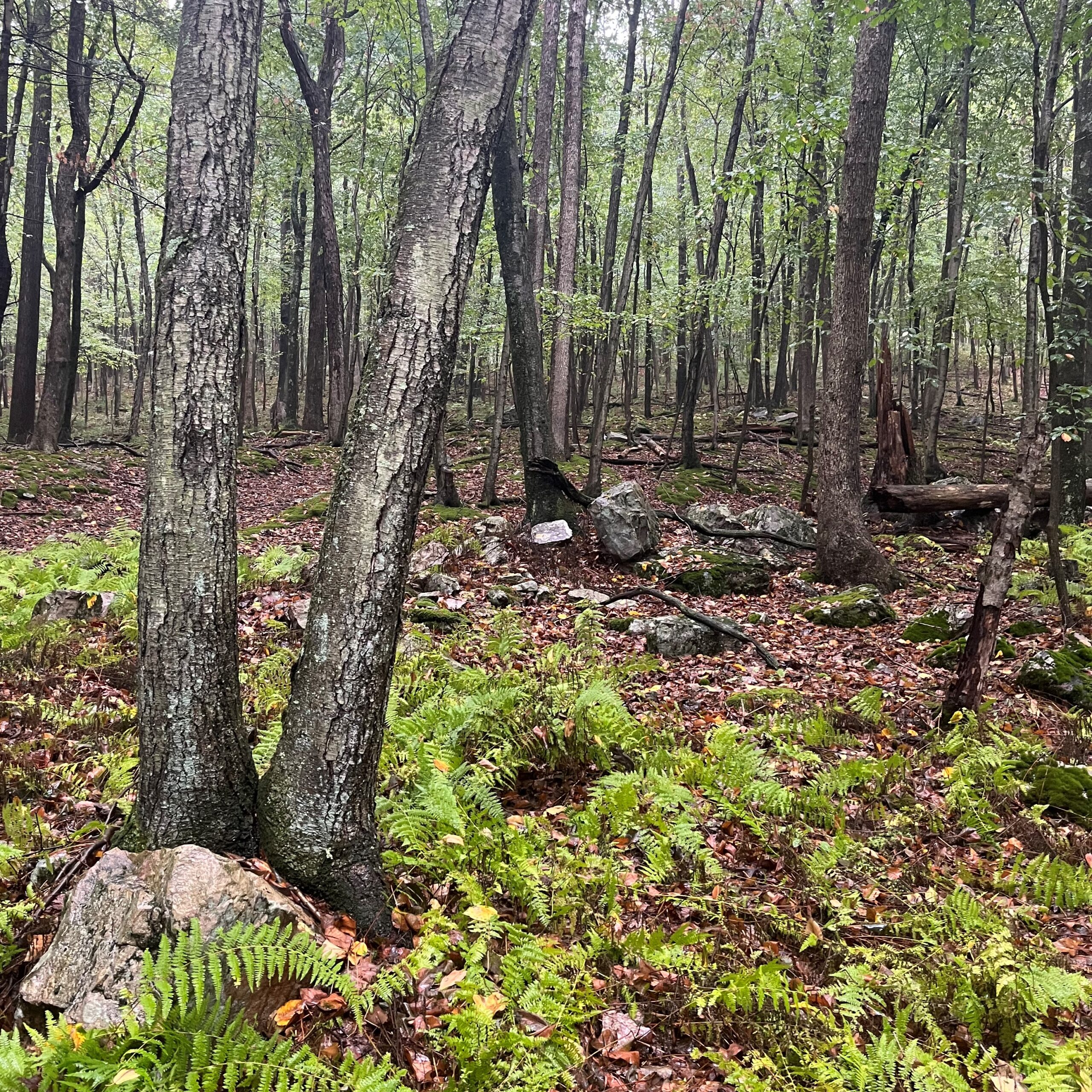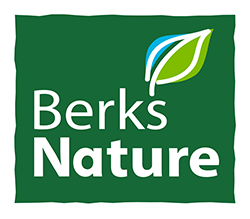The indigenous Lenape people, original stewards of the ridge, named it Kittatinny or “endless mountain”; a fitting name for a range that stretches close to 250 miles from northern Maryland to New York’s Catskill Mountains.
Bending through the southeastern corner of Pennsylvania, the Kittatinny Ridge is a bewitching and beautiful corridor of rugged forest. It bridges 185 miles of the Commonwealth, spanning 360,000 acres across 12 counties, including Berks.
Home to Hawk Mountain Sanctuary and the world-famous Appalachian Trail, outdoor enthusiasts seeking adventure, wildlife, and the awe of nature unfettered flock to the Ridge. The ecotourism of walking, hiking, hunting, and fishing alone generate $223 million for Berks County each year.
But the Kittatinny Ridge is more than the outdoor enthusiasts’ playground, 80% percent of the 360,000 acre-corridor is flush with forest and shrubland habitat. These mountainous woods shelter the headwater creeks of the Delaware, Lehigh, Schuylkill, and Susquehanna River watersheds, protecting and providing clean and plentiful water for thousands of people.
Wildlife too seek out the Ridge, which is recognized internationally as a premier raptor migration flyway, a Globally Important Bird Area for the cerulean warbler, and is the only home to the rare and endangered Regal Fritillary butterfly.
This staggering biodiversity is owed to the Ridge’s varied topography, from lofty peaks to plunging ravines, which create a multitude of microclimates. Connecting these contrasting habitats are expanses of unbroken shrub and woodlands, which act as “highways” for species to traverse as they move within and between these spaces.
These connections are vital for climate resiliency, as warming temperatures and changing weather patterns drive species to move – shifting their habitat range – to return to their preferred and necessary climate conditions. In fact, studies show that plants and animals are already on the move, shifting 11 miles north and 36 feet higher in elevation every decade.
The Kittatinny Ridge’s network of diverse and connected habitats can provide safe haven for these climate refugees.
Resilient, but not invincible.
Perhaps unbeknownst to many, the majority of the Kittatinny Ridge is not held in protection by state or federal agencies. On the contrary, nearly two-thirds of the Ridge’s 500 square miles are privately owned by several thousand individual landowners.
As such, nearly every part of the Kittatinny Ridge Corridor faces pressure from residential and commercial development. Meanwhile, many of the Ridge’s municipalities lack the resources and community support to enforce conservation ordinances.
Under these circumstances, it is not feasible nor is it prudent for the state or federal government to purchase the Kittatinny Ridge outright, to be added to the network of public lands. Instead, community buy-in from the people living on the mountain is required to achieve long-term protection. Land protection must be elevated as a community value.
Over the last 6 years, Berks Nature has joined growing momentum organized around the protection of the Kittatinny Ridge by cultivating community support and action.
Spearheaded by The Nature Conservancy (TNC), the Kittatinny Ridge Land Protection Partnership is an alliance of organizations, agencies, and academic institutions working with municipal officials and private landowners to conserve the natural, scenic, cultural, and aesthetic resources of the Kittatinny Ridge and Corridor.
With TNC at the helm, local land trusts across the Ridge found new direction: potential conservation properties were prioritized based on criteria like parcel size, ecological value, and climate resiliency and new funding distributed by TNC removed financial barriers for willing landowners to protect their land.
Adding momentum to this movement, the Pennsylvania Department of Conservation and Natural Resources (PA DCNR) officially designated the Kittatinny Ridge as a Conservation Landscape in 2018, one of just eight such Landscapes in the Commonwealth.
Together, these efforts have brought increased attention and funding to mobilize community action and collaboration to protect the Kittatinny Ridge.
Berks Nature has long employed a similar collaborative approach in their conservation efforts across Berks County and are energized to see it gain momentum now too along the Kittatinny Ridge, explains Larry Lloyd, Senior Ecologist with Berks Nature,
“Working with local partners, Environmental Advisory Councils, municipalities, and drinking water suppliers, all while employing multiple funding sources, this is how you work in an area: it’s land protection from all angles.”
The fruits of this multi-faceted collaboration and the community’s reinvestment in the Ridge are starting to ripen and in the summer of 2022, Berks Nature established four new conservation easements along the Kittatinny Ridge corridor totaling 606 acres. All four of the easements established in 2022 were donated by their respective owners; the entire appraised value of the development rights affected by the terms of the easement were voluntarily relinquished, requiring no compensation.
“The commitment and the perseverance of these people and what they have done to assemble their properties is admirable,” reflects Larry; Berks Nature works personally with every landowner, often over several years, to build the agreements of their property-specific conservation easement.
“They are willing to forego financial interest for their strong connection they have with this special place. It’s a privilege to work with them.”
There is a magic about the Kittatinny Ridge. Put plainly by Sarah Chudnovsky, Land Protection Specialist at Berks Nature, “The Ridge speaks to people.” And those who listen form a profound relationship with this inspiring landscape.

Karen and the late Barry miller on their eased property in Upper Tulpehocken Township (Natalie Kolb)
Miller Property
143 acres | 8 parcels
Upper Tulpehocken Township, Berks County | Tulpehocken Creek Watershed
Key Partners: Kittatinny Ridge Land Protection Partnership
Karen Miller and her husband Barry originally established a 78.5-acre conservation easement with Berks Nature in 2015. But the couple dreamt of acquiring several neighboring properties to add to this easement and took to work painstakingly assembling the adjacent, disparate parcels together under one ownership. Unfortunately, Barry Miller passed in 2020, before they could fully realize this conservation vision.
Karen has carried their shared commitment to conservation forward and in June 2022, the stage was finally set to amend the previous easement, adding 64.46 forested acres across four additional properties, bringing the total protected acreage to 143.01 across eight parcels.
Zuk Property
86 acres | 2 parcels
North Manheim Township, Schuylkill County | Schuylkill River Watershed
Key Partners: Schuylkill County Conservancy, Kittatinny Ridge Land Protection Partnership, WeConservePA, and the Conservation Easement Assistance Program (CEAP)
Nestled in the nexus of the Schuylkill River and Second Mountain, 86 acres of carefully managed mixed hardwood forest thrives thanks to the patient and diligent stewardship of Stephen Zuk.
By erecting deer-exclusion fencing, Zuk has encouraged natural forest regeneration and consequently, the woodland habitat here is lush and resilient, recharging groundwater for the Schuylkill River watershed, providing critical habitat for sensitive wildlife like the cerulean warbler, and fostering climate resiliency for the entire landscape.
Zuk’s forest was a key conservation property for the Kittatinny Ridge corridor, prompting Berks Nature to assist the Schuylkill County Conservancy with protecting the land; in May 2022 Berks Nature established a conservation easement on the entirety of Zuk’s properties.
Transactional expenses for establishing the easement were covered by a grant from the Conservation Easement Assistance Program, administered by WeConservePA with funding from PA Department of Conservation and Natural Resources.

A dusting of snow covers Zuk’s protected woodlands.

Flowing water at the Stone Creek Headwaters easement.
Stone Creek Headwaters
216.8 acres | 10 parcels
Bethel Township, Berks County | Swatara Creek Watershed
Key Partners: Kittatinny Ridge Land Protection Partnership
In July 2022, Berks Nature closed on the Stone Creek Headwaters property, 10 parcels totaling 216 forested acres along the Kittatinny Ridge.
Located between State Game Lands and the Appalachian Trail, the easement now placed on the Stone Creek properties bridges a critical gap in an otherwise protected nexus of wildlife habitat, recreational spaces, and scenic viewsheds. The property’s uncharacteristic road access put it at high risk for future development, but no longer.
The forested property boasts an impressive diversity of wildlife habitat ranging from wetlands to rocky outcrops. These microclimates and the contiguous woodland that connects them, builds climate resiliency.
Rausch Woodland
168.12 acres acres | 3 parcels
West Brunswick, Schuylkill County | Schuylkill River Watershed
Key Partners: Kittatinny Ridge Land Protection Partnership, Schuylkill County Conservancy, The Nature Conservancy
While not located in Berks County, the Rausch Woodland is a crucial conservation property for the Kittatinny Ridge corridor; with help from the Schuylkill County Conservancy and the Nature Conservancy, Berks Nature established an easement across the three parcel-property in October 2022.
The Rausch Woodland is exceptional in its diversity. Rocky outcrops give way to furrowed ravines and two headwater tributaries to the Schuylkill River trace through forested wetlands. Habitats of varying elevations connected by forest provide refuge for multiple species of concern and enhance the climate resiliency of the Kittatinny Ridge corridor.
The newly eased property is adjacent to publicly protected State Game Lands, filling an important gap in a corridor facing increasing development pressure.
Lori Rausch and Dave Peletsky contributed a priceless gift to the future of Fork Mountain by donating their conservation easement to be protected in perpetuity. The establishment of the easement was made possible through a grant provided by the Nature Conservancy.

The lush and rugged forests of the Rausch Woodland easement.
Sources
- PA Department of Conservation and Natural Resources, “Conservation Landscapes” https://www.dcnr.pa.gov/Communities/ConservationLandscapes/Pages/default.aspx
- Shippensburg University, Center for Land Use and Sustainability, “The Kittatinny Ridge” https://ship.maps.arcgis.com/apps/Cascade/index.html?appid=37307fde7091497ab5115f43b6700ad6
- The Kittatinny Coalition, “Kittatinny Ridge Conservation Landscape” accessed at DCNR eLibrary
- The Kittatinny Coalition, “Kittatinny Ridge Fact Sheet”, accessed at https://kittatinnyridge.org/explore/about-the-ridge/
- The Kittatinny Coalition, “Kittatinny Ridge Brochure” accessed at https://kittatinnyridge.org/explore/about-the-ridge/
- The Nature Conservancy (2021, August 1) “Pennsylvania – Kittatinny Ridge”, https://www.nature.org/en-us/about-us/where-we-work/united-states/pennsylvania/kittatinny-ridge/

